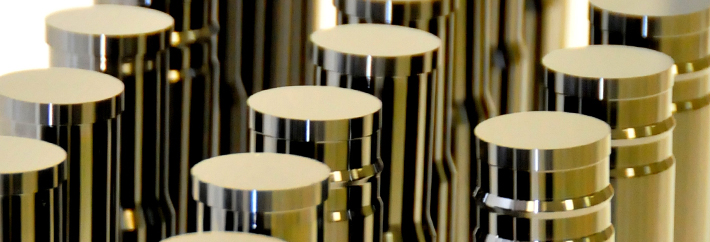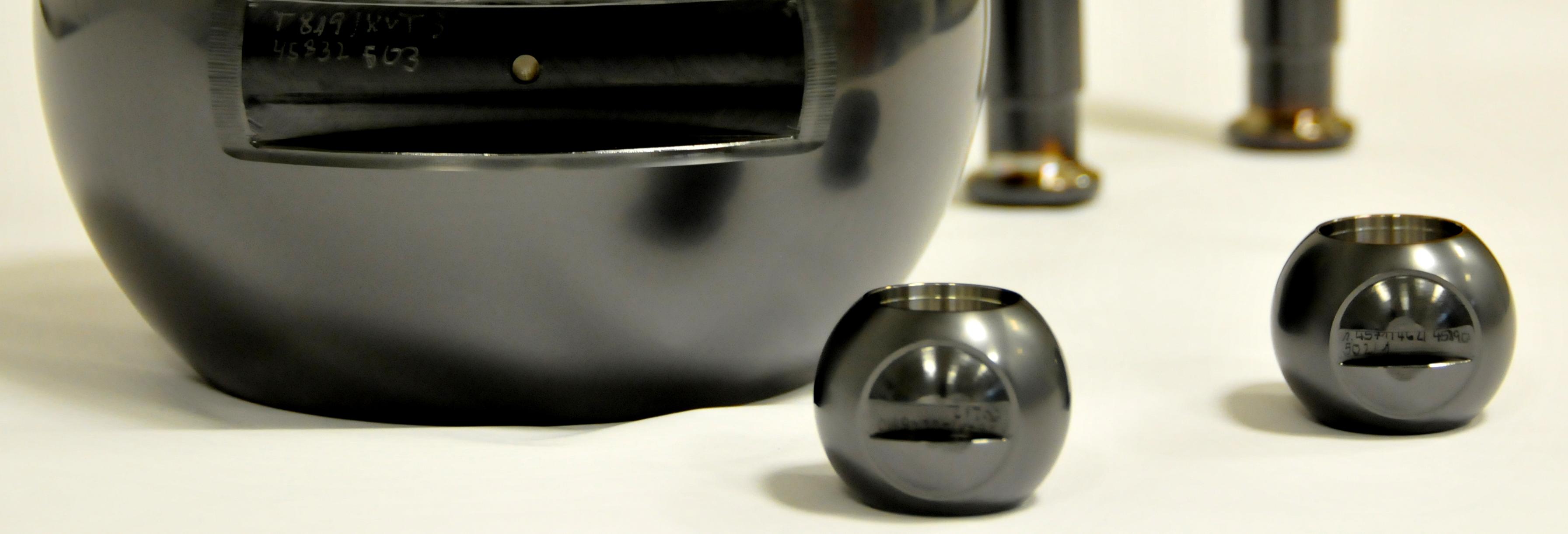Diamond-Like Carbon (DLC) Coatings
Benefits
- Reduced friction, lubricant-free or low-lubricant applications in the medical, food and lacquering industries, plant and apparatus construction, etc.
- Surface hardening due to high inherent hardness, scratch-resistant coatings and general wear protection
- Optimization of wetting and adhesion characteristics (formation of droplets on turbine blades, propellers), avoidance of deposits on embossing tools
- Protection against corrosion due to chemically inert surface
- FDA-compliant and suitable for food contact (EC 1935/2004 and 10/2011-OM7)
- Biocompatible as per ISO 10993-12, 18 / SOP PM 061 V03
- Suitable for more complex 3D geometry
- Protection against dry running of components such as engines and pumps (SiC)
- Energy savings
- Decorative surfaces for jewelry and design objects
- Selective absorber coating for optical applications
- Our engineering teams carefully review your specifications and needs to ensure the right coatings for your applications.
Properties
- Coating according to VDI 2840: a - C: H / a - C: H: X
- Color: black-anthracite, varies with the structure of the surface to be coated
- Microhardness: up to 2400 HV 0.02
- Coefficients of friction: from 0.03–0.06 (vs. SST)
- Influence of humidity: minimal
- Temperature stability: high, depending on coating type, guaranteed up to 500°C
- Surface roughness: no inherent roughness, only that of the base material is reproduced
- Moistening character: hydrophilic/-phobic can be set
- Corrosion behavior: chemically virtually inert, minimal corrosion in highly oxidizing atmospheres
- FDA: compliant
- Optical characteristics: selective absorption characteristics
The part surfaces can be prepared prior to coating by in-house blasting (Corundum, glass beads dry, wet glass beads)
Principle: Beside other types of carbon layers, we focus on the amorphous, hydrogen-containing type of diamond-like carbon (DLC). Elements such as nitrogen, silicon, fluorine and titanium are used as dopants.
The addition of such elements makes it possible to specifically vary the coatings so that they are harder, more elastic or exert less friction, depending on the customer’s requirements.
Plasma-assisted CVD (Chemical Vapor Deposition), or PACVD, is the procedure that Cleanpart uses to manufacture particularly heat-resistant coatings with diamond-like characteristics. In this environmentally-friendly process, the parts to be coated can be of any shape and are neither moved nor exposed to high temperatures in the reactor.
The coatings are marketed under the name DYNAMANT™
Methodology: after the specifications have been defined, Cleanpart implements the entire coating procedure that includes tooling, surface preparation by blasting , controls and measurements, analytics and inline testing.

















